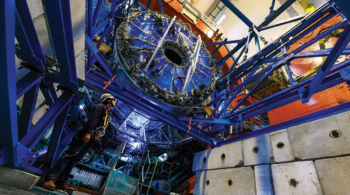 Read article 'LHCb looks forward to the 2030s'
Read article 'LHCb looks forward to the 2030s'
LHCb looks forward to the 2030s
The challenges of performing precision flavour physics in the very harsh conditions of the HL-LHC are triggering a vast R&D programme at the forefront of technology.











